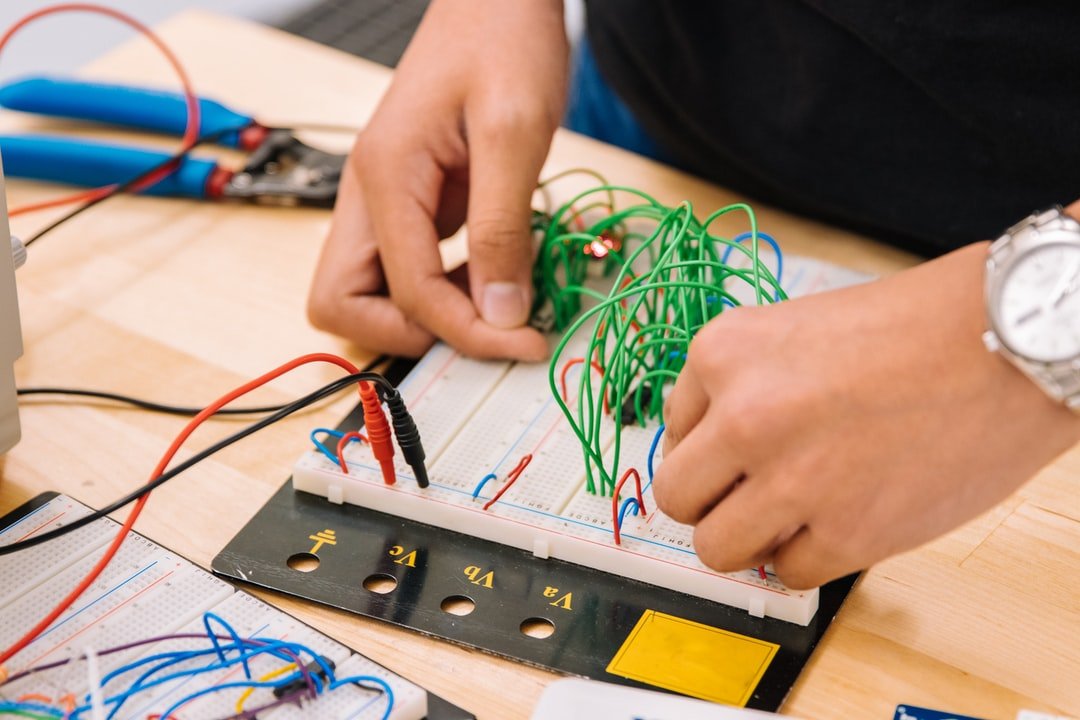As the world increasingly moves online, the need for good UX design becomes more and more important. UX design is all about making sure that users have a good experience when using a website or app, and this is something that can be hard to achieve if you're not testing your designs on real people.That's where remote UX testing comes in. Remote UX testing is a way of getting feedback on your designs from real users, without having to bring them into a physical testing space. This means that you can test your designs with people from all over the world, which is ideal if you want to get an accurate picture of how your design will perform in the real world.There are lots of different ways to do remote UX testing, but one of the most popular methods is usability testing. This involves asking users to complete tasks while they use your site or app, and then giving you feedback on their experience. It's a great way to identify any areas where your design needs improvement, and it's something that every company should be doing as part of their overall UX strategy.
The coronavirus pandemic has resulted in a significant increase in the number of people working remotely. This trend is likely to continue even after the pandemic subsides, as more companies are realizing the benefits of remote work. For UX professionals, this presents both opportunities and challenges.On the one hand, there is a greater demand for UX services that can be delivered remotely. On the other hand, testing user experience can be more difficult when users are not physically present. In this article, we'll explore some tips for conducting effective remote UX testing.One important consideration is choosing the right platform for your needs. There are a variety of options available, from web-based tools to mobile apps to dedicated hardware devices. It's important to select a platform that will allow you to collect the data you need to make informed decisions about your product's design.Another key factor is creating realistic test scenarios that accurately simulate how users will interact with your product in the real world. This can be challenging when you're not able to observe users directly, but there are a number of methods you can use to gather insights into user behavior (e.g., surveys, interviews, logs).Finally, it's important to keepin mind that remote UX testing is not a replacement for in-person testing. In many cases, a combination of both approaches will yield the best results.


We all know that the user experience is everything. And as we move into the future, we're only going to become more reliant on technology to get things done. That's why it's so important to make sure that your website or app is designed with the user in mind.One way to do this is through remote UX testing. This is a process where users are given tasks to complete on your site or app, and then they provide feedback about their experience. This feedback can be used to improve the design of your site or app, and make sure that it's easy and enjoyable for users to use.If you're not already doing remote UX testing, then you should definitely consider it. It's an essential part of creating a great user experience for your website or app, and it can help you spotting any problems before they become too big.
One of the main reasons why companies are not doing remote UX testing is because they are not aware of the benefits. Another reason is that they believe it is expensive and time-consuming to set up. Remote UX testing can actually save you both time and money, as well as providing accurate insights into how users interact with your product.There are many advantages to performing UX tests remotely. Perhaps the most obvious benefit is that it enables you to reach a global audience of users, which can be essential for products with an international user base. It also allows you to test users in their natural environment, which can provide more accurate results than lab-based testing. In addition, remote testing can be conducted much faster than traditional methods, meaning you can get feedback on your product quickly and without incurring high costs.Despite the numerous benefits of remote UX testing, there are still some companies who remain reluctant to adopt this approach. One common concern is that it can be difficult to ensure that participants understand and follow instructions when they are not in a controlled environment. However, this problem can be easily overcome by providing clear and concise instructions beforehand and Well-designed taskflows help guide participants through the process so they know what's expected of them at eachstage. Another worry is that it can be hard tomoderate tests when they are being conducted remotely. However, there are a number of software platforms that allow you to do this easily and efficiently.So overall, there are many advantages to conducting UX testing remotely. With the right planning and preparation, any potential challenges can be overcome, making remote UX testing an extremely valuable tool for any company looking to improve their product.
There are a few reasons why people don't test their UX remotely, but the main one is probably that they don't know how. Testing your UX remotely can be a great way to get feedback from users who might not be able to come to your office or testing location. It can also be a great way to reach users in different parts of the world. There are a few things you need to keep in mind when doing remote UX testing, but once you get the hang of it, it's really not that hard.

User experience (UX) testing is a process businesses use to improve the satisfaction of their customers and employees with a product or service. By understanding how real people interact with your company's products and services, you can make decisions that will improve the overall experience.Historically, UX testing has been conducted in person, in labs or offices, which can be expensive and time-consuming. With the advent of remote UX testing tools, companies can now test their products and services with users anywhere in the world, at any time.There are many benefits of conducting UX tests remotely. First, it's more cost-effective than traditional in-person testing since you don't need to rent space or pay for travel expenses. Second, you have a larger pool of potential testers to choose from since geography is no longer a limiting factor. Finally, remote testing allows you to conduct tests on a variety of devices (e.g., smartphones, tablets, laptops) simultaneously which wasn't possible with in-person testing.If your company isn't already conducting remote UX tests as part of its product development process, now is the time to start!
The COVID-19 pandemic has led to a "new normal" where people are working remotely and spending more time online than ever before. This shift has made it even more important for companies to get feedback from users about their digital products and services.There are a number of ways to collect user feedback, but one of the most effective is through remote UX testing. This type of testing allows companies to get direct feedback from users in their natural environment, without the need for them to come into a physical space.There are a few key benefits of remote UX testing that make it an essential part of the product development process:1. It's fast and convenient - Remote UX testing can be conducted quickly and without much advance planning, which makes it ideal for getting feedback during the early stages of product development when things are still in flux.2. It's cost-effective - You don't need to invest in expensive lab space or equipment to conduct remote UX testing, which makes it a more cost-effective option than traditional in-person usability testing.3. You can reach a global audience - With remote UX testing, you can connect with users from all over the world and get insights into how
When you're testing UX, it's important to be able to see how users interact with your product in their natural environment. That means being able to test remotely. There are a few different ways you can do this:1) Use a service like UserTesting.com that lets you record users as they use your site or app.2) Use a tool like FullStory that gives you recordings of user sessions, along with heatmaps and other data.3) Use something like Remote TestKit from Amazon Web Services, which lets you test mobile apps on real devices remotely.There are pros and cons to each of these approaches, but the bottom line is that remote UX testing is essential if you want to get accurate insights into how users actually interact with your product.

Assuming you want a paragraph about the title: You need to be able to reach users where they are, and that's not always in front of a computer. With more people working remotely than ever before, it's important to be able to test your UX with users in their natural environment. That means testing on mobile devices, tablets, and other non-traditional devices. It can be challenging to do this type of testing remotely, but there are a few ways to make it work. One way is to use screen-sharing software so you can see what the user is doing while they test your app or website. This can be combined with video conferencing so you can talk to the user and ask them questions about their experience. Another option is to use an online service that allows users to test your app or website from their own device. This can be helpful if you need testers from specific demographics or locations. Whatever method you choose, remote UX testing is essential for making sure your products are usable for all kinds of users.
The beauty of remote UX testing is that it opens up the possibility of testing with a wider range of users. This is because you're not limited by location when it comes to recruiting testers. You can reach out to users all over the world, which means you can get a more diverse pool of testers.Another advantage of remote testing is that it's more convenient for both testers and companies. Testers don't have to take time out of their day to come into a physical location, and companies don't have to worry about finding space for testing sessions. Everything can be done online, which makes the process much simpler.Overall, remote UX testing has a lot of benefits that make it an attractive option for companies looking to improve their user experience. With a wider range of users and more convenience for all involved, it's no wonder this type of testing is on the rise.
UX testing is a process in which a tester evaluates the user experience of a software application. The goal of UX testing is to ensure that the software provides an optimal level of user satisfaction by being easy to use, aesthetically pleasing, and functional.One type of UX testing is remote UX testing. This type of testing allows testers to evaluate the user experience of an application without having to be physically present. This can be done by providing testers with access to a remote server or simulator that mimics the functionality of the actual software application. Remote UX testing has several advantages over traditional, in-person UX testing. First, it is more convenient for both testers and users because users do not have to travel to a specific location in order to participate in the test. Second, it eliminates potential biases that can occur when testers and users are in close proximity to each other (such as when users feel pressured to please the tester). Third, it allows for a more natural setting since users are able to use the software application in their own environment (such as their home or office). Overall, remote UX testing is a valuable tool for assessing the user experience of an application. It is convenient, unbiased, and realistic, making it an ideal method for gathering user feedback.

Remote usability testing can speed up your development process by allowing you to test more frequently and get feedback more quickly. By conducting tests remotely, you can eliminate the need for expensive in-person testing sessions and save time by being able to test with users from around the world at any time of day.There are a few things to keep in mind when conducting remote usability tests, such as making sure your test platform is secure and user-friendly, and providing clear instructions to participants. But overall, remote usability testing is a great way to get quick feedback on your product or website without having to worry about logistics or budget.
There are a number of advantages to conducting UX testing remotely, including the ability to reach a wider range of users, the ability to test in real-world conditions, and the fact that it is generally more cost-effective than traditional testing methods.One of the key benefits of remote UX testing is that it allows you to reach a much wider pool of potential users. This is because you are not limited by geographical location and can therefore test with people from all over the world. This is particularly valuable if your target market is global or if you want to test with people who have specific expertise or experience.Another advantage of remote UX testing is that it allows you to test in real-world conditions. This means that you can simulate how users will interact with your product or service in their own environment and get feedback that is more representative of their actual experience. This type of testing can be particularly useful for products or services that are used in a variety of different settings or for evaluating user behavior across different devices.Finally, remote UX testing is generally more cost-effective than traditional methods such as lab-based usability studies. This is because there are no travel costs involved and you do not need to rent space in a laboratory setting. In addition, you can often conduct testing with a smaller number of users which reduces the overall cost of the project.
There are plenty of reasons to love remote UX testing. For starters, you don't have to worry about travel or accommodations for your testers. That's a huge savings right there! But beyond the financial considerations, there are plenty of other benefits to doing UX testing remotely.For one thing, you can test with a much wider pool of potential users. That means you're more likely to find someone who is truly representative of your target audience, which is essential for getting accurate results. You also have more control over the environment in which the testing takes place, so you can eliminate any distractions or confounding factors that could impact the results.And let's not forget the most important benefit of all: convenience! With remote UX testing, there's no need to coordinate schedules and juggle logistics. You can conduct tests on your own time and at your own pace, which makes it easy to work them into even the busiest schedule.

There are a few different specialized tools for remote testing that can come in handy. One is called “Remote Test Kit” and it basically allows you to remotely test any website or web application from anywhere in the world. Another similar tool is known as “Sauce Labs” and it provides you with a cloud-based platform for testing your web applications.
There are plenty of reasons to start remote UX testing today. For starters, it's a great way to improve the usability of your site or app. It's also a great way to get feedback from users in different locations. And, last but not least, it's a great way to save money on travel costs.So what is remote UX testing? Basically, it's a process of conducting user research remotely, using tools like screen-sharing software and video conferencing. This means you can test with users from all over the world without having to leave your office (or home).Not only is remote UX testing more convenient than traditional user research methods, but it's also more cost-effective. That's because you don't have to pay for airfare or accommodation for your testers.So there's no excuse not to start remote UX testing today. If you want to improve the usability of your site or app, get feedback from users in different locations, and save money on travel costs, then there's no reason not to give it a try!
User experience testing is important for all companies, especially those with remote teams. By user experience testing, companies can improve their products and services to better meet the needs of their customers. Additionally, by user experience testing, companies can discover potential problems with their products and services before they launch them. In short, every company needs to start remote UX testing to ensure that their products and services are the best they can be.